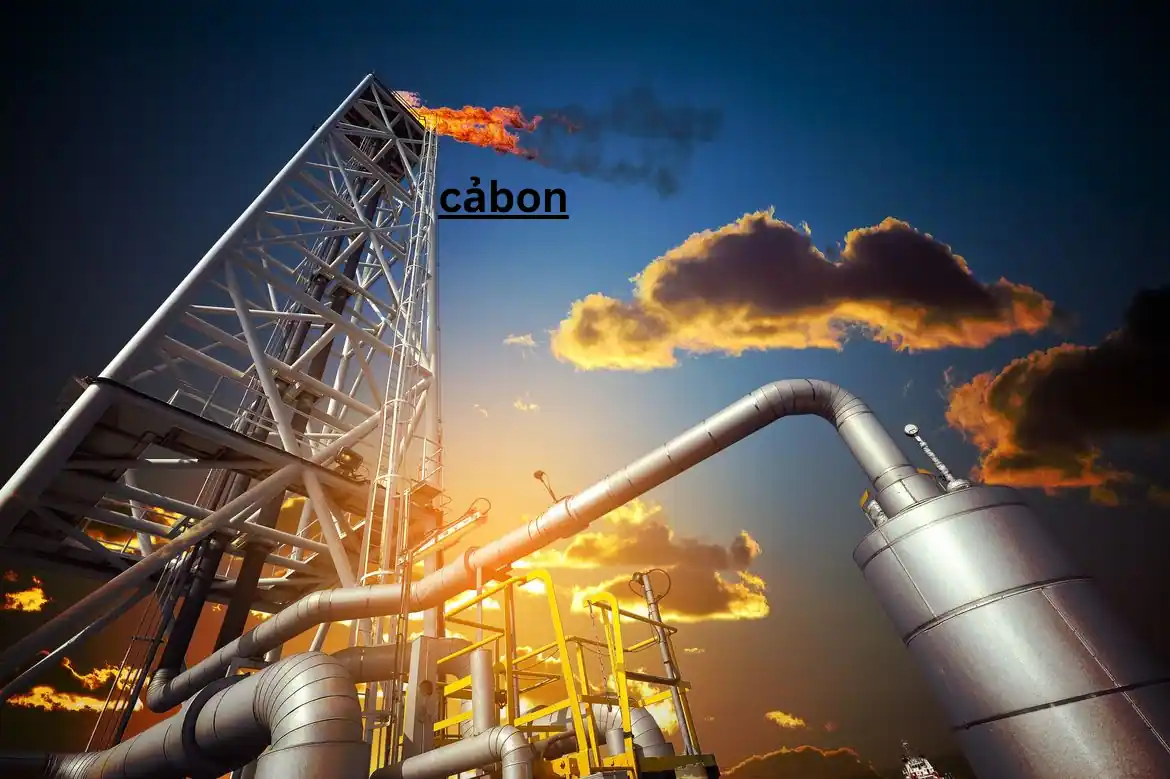As a knowledgeable professional in contemporary society, you might have encountered discussions about “cảbon” and questioned its nature. Cảbon, an elemental component inherent in the fabric of life, is vital for our existence. Consisting of carbon, hydrogen, and oxygen, it serves as a fundamental building block for amino acids, proteins, and DNA. The significance of cảbon extends to its pivotal role in the chemical processes that uphold the essence of all biological life. A comprehension of cảbon and its functionalities offers profound insights into both our own composition and the molecular intricacies of the surrounding world.
This article aims to offer a comprehensive examination of cảbon, encompassing its historical discovery, molecular composition, and diverse applications across biochemistry, food, materials, and energy production. Acquiring a more profound understanding of this elemental building block will illuminate its significant influence and ubiquity in both the natural and human-engineered realms. Despite its seemingly straightforward structure, cảbon emerges as a crucial component essential for the intricate complexities and marvels inherent in life.
Table of Contents
What Is Cảbon? Definition and Overview
Cảbon, in this context, refers to carbon dioxide (CO2) that has been captured and sequestered in vast underground geological formations such as depleted oil and gas reservoirs or saline aquifers. This process of capturing and storing cảbon serves as a method to mitigate climate change by reducing greenhouse gas emissions.
The fundamental idea behind cảbon capture and storage (CCS) involves separating, compressing, and transporting CO2 emissions from sources like coal-fired power plants. Subsequently, the captured CO2 is injected deep underground for prolonged storage, where it becomes trapped in the microscopic pores of rock formations, preventing its release into the atmosphere. This approach enables the continued use of fossil fuels in a carbon-neutral manner.
A CCS system comprises three primary components:
1. Capture: Extracting CO2 from significant emission sources such as power plants and industrial facilities, employing various technologies to separate CO2 from other gases.
2. Transport: Compressing and conveying the captured CO2 to a storage site, typically through pipelines, but occasionally utilizing tankers or trucks.
3. Storage: Injecting the CO2 deep underground into geological formations that securely trap and confine the CO2 for an extended period. Storage locations include depleted oil and gas fields, saline aquifers, and unmineable coal seams.
If globally implemented at scale, CCS holds the potential to curtail CO2 emissions by up to 20% by the year 2050, as projected by the International Energy Agency. Nevertheless, widespread deployment faces significant challenges such as high costs, technological requirements, policy considerations, and the need for public acceptance.
The Many Forms of Cảbon: Diamond, Graphite, Graphene, Etc.
Cảbon manifests in diverse forms, encompassing the well-known diamonds and graphite to the cutting-edge graphene. Each distinct form possesses unique properties that render them apt for a variety of applications.
Diamond
Diamond, renowned as the hardest naturally occurring substance, comprises carbon atoms organized in a robust tetrahedral lattice structure. This exceptional material finds applications in cutting tools, abrasives, and jewelry.
Graphite
Graphite exhibits a hexagonal lattice structure, with carbon atoms arranged in sheets. The soft, dark, and flaky nature of graphite results from the weak bonds between these sheets. This material is employed in the production of pencils, lubricants, and plays a role in nuclear reactors.
Graphene
Graphene, a two-dimensional sheet of carbon atoms bonded in a hexagonal lattice, represents a single layer of graphite. Characterized by flexibility, near transparency, and exceptional conductivity for both electricity and heat, graphene holds immense potential in various applications. Its prospective uses encompass lightweight electronics, flexible displays, high-efficiency solar cells, and ultrafast transistors.
Fullerenes
Fullerenes are carbon molecules with hexagonal and pentagonal rings, creating spherical or tubular structures. The most renowned fullerene is the soccer ball-shaped C60 buckminsterfullerene. These structures hold promise for applications in medicine, catalysis, and nanotechnology.
Carbon Nanotubes
Carbon nanotubes, cylindrical structures formed by rolling graphene sheets into tubes, exhibit remarkable characteristics such as being lightweight, stronger than steel, and excellent conductors of electricity. Their potential applications span high-performance composites, energy storage, and molecular electronics.
In conclusion, carbon stands out as a versatile element, giving rise to a variety of structures with properties well-suited for numerous applications that hold the potential to enhance and enrich our lives in the future. Ongoing research on carbon materials could pave the way for exciting new discoveries and innovations.
Cảbon’s Unique Properties and Atomic Structure
Cảbon’s Unique Properties and Atomic Structure
Carbon exhibits several distinctive properties facilitating versatile chemical bonding. With four valence electrons in its outer shell, carbon forms diverse and stable covalent bonds with various elements, enabling the creation of long chains and ring structures.
Carbon atoms can establish single, double, and triple covalent bonds with each other, leading to the formation of alkenes and alkynes. Furthermore, carbon engages in covalent bonds with hydrogen, oxygen, nitrogen, phosphorus, sulfur, and halogens. These adaptable bonding properties empower carbon to generate an extensive array of intricate and sizable molecules.
In its natural state, carbon has two stable isotopes: carbon-12 (constituting 98.89% of natural carbon) and carbon-13 (comprising 1.11%). The radioactive isotope carbon-14, with a half-life of approximately 5,700 years, is frequently employed in radiocarbon dating to estimate the age of objects.
A carbon atom’s nucleus contains 6 protons and 6 neutrons. Its electronic configuration is 1s2 2s2 2p2, with two electrons in the 1s orbital, two in the 2s orbital, and two in the 2p orbital in its ground state. During covalent bond formation, carbon promotes one 2s electron to the vacant 2p orbital, resulting in four unpaired valence electrons in its outer shell, available for sharing with other atoms.
Crucial for all known life on Earth, carbon is a foundational component of complex organic molecules, often combined with hydrogen, oxygen, and nitrogen. The capacity of carbon to establish diverse and stable covalent bonds is pivotal for the creation of millions of distinct organic compounds integral to biochemical processes.
The Role of Cảbon in Organic Chemistry and Biochemistry
Carbon assumes a fundamental role in the realms of organic chemistry and biochemistry, serving as the cornerstone for all known life on Earth and giving rise to an unparalleled multitude and diversity of compounds.
The distinctive properties of carbon, characterized by four valence electrons in its outer shell, facilitate the formation of varied molecules through bonds with elements such as hydrogen, oxygen, and nitrogen. The carbon atom’s capacity to bond with up to four other atoms allows for the creation of extensive chain molecules and intricate structures.
Essential to all organic matter and living organisms, carbon-based compounds are pivotal components. The four primary groups of organic molecules, each containing carbon, are as follows:
1. Carbohydrates: Providing energy and structure, examples include sugars, starch, and cellulose.
2. Lipids: Functioning as energy stores, insulation, and cellular membranes, examples comprise fats, oils, and waxes.
3. Proteins: Playing a crucial role in structure, function, and regulation, proteins are composed of amino acids.
4. Nucleic acids: Storing and transmitting genetic information, with DNA and RNA as the main types.
These organic molecules form the foundational building blocks of all living entities. Within cells, they undergo synthesis and breakdown processes to furnish fuel and raw materials necessary for organism function.
In the field of biochemistry, carbon emerges as a pivotal player in the structure and function of biological molecules. The carbon skeletons of organic molecules serve as attachment points for functional groups that dictate each molecule’s properties. For instance, the distinct bonding of carbon atoms in the amino acid alanine results in different functional groups compared to the amino acid glycine, despite both containing carbon, hydrogen, oxygen, and nitrogen atoms.
The ability of carbon to foster the creation of diverse and intricate molecules accounts for the vast array of compounds within living organisms. Undoubtedly, carbon’s central role in organic chemistry and biochemistry lays the foundation upon which all life is constructed.
Where Cảbon Comes From: Natural Sources and Synthesis
Activated carbon, commonly referred to as cảbon, is derived from carbon-rich natural sources, with coal and wood being the predominant ones. Hardwoods, such as coconut shells and wood chips, represent the two most prevalent sources. Through a high-temperature processing method called pyrolysis, these materials undergo transformation, resulting in the production of pure carbon.
Coal and Peat
Coal and peat, both sedimentary organic substances characterized by elevated carbon content, can undergo pyrolysis to transform into activated carbon. Particularly, low-grade coal, commonly referred to as “brown coal,” proves effective due to its increased pore presence, contributing to a more extensive surface area. Peat, composed of partially decomposed vegetation matter, shares this characteristic. Both these materials yield activated carbon distinguished by its highly porous structure.
Wood and Coconut Shells
Various hardwoods, such as oak, hickory, and maple, along with coconut shells, are widely chosen as precursors for manufacturing activated carbon due to their robust and dense fibers. These materials contribute to the production of high-quality activated carbon. Coconut shells, known for sustainability, are especially favored, resulting in an end product with significant porosity. The shells undergo grinding and heating processes to yield small granules of pure carbon, boasting an extensive surface area.
Alternatively, activated carbon can be synthetically derived through chemical synthesis utilizing substances like coal tars, ethylene dichloride, and phosphoric acid. Treatment with chemicals opens up pores in these precursors, and subsequent heating produces activated carbon. While synthetically produced activated carbon tends to exhibit more consistent properties, naturally sourced alternatives are more sustainable and environmentally friendly.
Regardless of the source, the key to generating top-quality activated carbon lies in maximizing surface area through an intricate network of pores. The source material undergoes a transformation into a matrix of nearly pure elemental carbon with pores of varying sizes, resulting in an extensive surface area available for adsorption and filtration. Proper activation and processing are essential to develop an optimal pore structure and surface area, determining the effectiveness of the final activated carbon product.
Uses of Cảbon in Materials Science and Nanotechnology
Carbon stands out as one of nature’s most versatile elements, playing a pivotal role in materials science and nanotechnology. Its capacity to create varied molecular structures gives rise to a broad spectrum of physical properties, offering significant utility in material design and engineering.
Several key applications of carbon in materials and nanotechnology encompass:
Reinforcement
Carbon fibers and nanotubes serve as reinforcement materials for substances such as polymers, ceramics, and metals. These components enhance strength and durability while simultaneously decreasing weight. Composites, specifically carbon-reinforced polymers, are extensively utilized in various applications, including aircraft, automobiles, sporting goods, and infrastructure.
Conductivity
Carbon materials, including graphite and nanotubes, exhibit high conductivity and find applications in electrodes, sensors, and electronics. The adaptability of their conductivity based on molecular structure makes them suitable for diverse applications. This includes scenarios demanding high conductivity, such as in batteries, as well as situations requiring variable conductivity, like in components such as thermostats.
Adsorption
Activated carbon possesses an exceptionally expansive surface area featuring porous spaces capable of adsorbing gases and liquids. Its applications extend to filtration systems, encompassing water purification, air purification, and industrial pollution control. Additionally, its adsorption capabilities make it suitable for use in storage systems for gases such as hydrogen.
Catalysis
Carbon materials serve as a foundation for catalytic nanoparticles, enabling the facilitation of chemical reactions. In vehicles, catalytic converters utilize carbon to mitigate emissions, while ongoing exploration focuses on carbon’s application in renewable energy technologies like fuel cells and artificial photosynthesis.
Biomedical applications
Carbon, known for its biocompatibility, finds utility in various medical applications such as implants, drug delivery, biosensors, and medical devices. The potential of graphene and nanotubes extends to fields like tissue engineering, bioimaging, and precision medicine. However, comprehensive research is essential to fully comprehend the biological and toxicological impacts before considering widespread use in the medical field.
In essence, carbon has emerged as a pivotal element for driving technological innovation and enhancing global living standards. Ongoing research endeavors are continually broadening its applications, promising societal benefits. With responsible development, carbon materials hold the potential to contribute to more sustainable solutions in energy systems, transportation, infrastructure, and healthcare.
Cảbon Emissions and Climate Change Impacts
Carbon emissions entail the discharge of carbon dioxide and other greenhouse gases into the atmosphere. Human activities, such as the combustion of fossil fuels, deforestation, and industrialization, contribute to the heightened concentration of carbon dioxide in the atmosphere. This increase traps more heat in the lower atmosphere, leading to the overall warming of the planet, commonly referred to as global warming.
Climate Change Impacts
The effects of climate change are already evident worldwide, with rising sea levels, intensified storms, more frequent extreme weather events, and escalating wildfires. Should carbon emissions continue to increase, the outcomes could be catastrophic.
Anticipated consequences of climate change in the coming decades include:
– Escalating sea levels leading to coastal flooding and the displacement of millions, particularly impacting low-lying areas and islands.
– Altered weather patterns resulting in more frequent and severe extreme events like hurricanes, heatwaves, droughts, and heavy rainfall. These events pose threats to life, agriculture, and property.
– Risks to food security and water supply due to changing rainfall patterns and more frequent droughts, making crop cultivation and livestock raising challenging. Glacier melt also impacts freshwater resources for billions.
– Irreversible loss of biodiversity as many species struggle to adapt swiftly enough to the rapid pace of climate change, impacting coral reefs, arctic wildlife, and numerous plant species.
– Aggravated wildfires releasing increased carbon dioxide and particulate matter into the atmosphere. Longer, more intense wildfire seasons render many areas uninhabitable, endangering lives and homes.
– Spread of diseases as warm weather facilitates easier disease transmission. Diseases like malaria and dengue fever may become more prevalent.
– Economic impacts, including costs from extreme weather damages, healthcare expenses, and productivity losses, with the poorest countries facing the greatest economic hardships.
Mitigating the severe consequences of climate change and ensuring a sustainable future requires a reduction in carbon emissions and a transition to renewable energy sources. Urgent action is imperative, necessitating collaboration among governments, organizations, and individuals to adopt sustainable practices and make eco-friendly choices. Together, we have the ability to make a meaningful difference.
Cảbon Capture and Sequestration Methods
A method employed to address climate change is Carbon Capture and Sequestration (CCS), which focuses on capturing carbon dioxide (CO2) emissions at their origin and securely storing them to prevent their release into the atmosphere. Various approaches exist for capturing and sequestering CO2:
Geological Sequestration
The prevalent technique involves injecting carbon dioxide (CO2) into deep geological formations, such as exhausted oil and gas reservoirs or saline aquifers. This process entails compressing CO2 into a liquid, transporting it to the injection site, and pumping it into porous rock formations situated hundreds of meters underground. Subsequently, the CO2 disperses within the formation, with some dissolving in fluids. Over time, mineral reactions transform the CO2 into solid carbonate minerals, ensuring its permanent sequestration. Rigorous monitoring is essential to verify that the CO2 remains securely trapped underground.
Ocean Sequestration
An alternative involves injecting CO2 into deep ocean waters, where it dissolves and integrates with seawater. However, this method remains experimental, and there are environmental apprehensions regarding its impact on marine ecosystems. Thorough monitoring is essential to assess the potential effects.
Mineral Carbonation
A process entails the reaction of CO2 with metal oxides within solid materials, such as mining waste, leading to the creation of stable carbonate minerals that effectively sequester CO2 in a solid state. These carbonate minerals can be either stored or utilized in various applications, including building materials. However, the method necessitates substantial quantities of silicate rocks and results in the generation of secondary waste products. Consequently, additional research is imperative to upscale the process and address associated challenges.
Bioenergy with Carbon Capture and Storage (BECCS)
BECCS, or Bioenergy with Carbon Capture and Storage, entails capturing CO2 emissions from the combustion of bioenergy or biomass and subsequently storing the CO2 underground. This process results in negative emissions, as the plant materials absorb CO2 during growth. However, the substantial land requirements for biomass cultivation pose a potential challenge, potentially conflicting with food production.
In summary, despite the promise of CCS in mitigating climate change, all methods necessitate further research, development, and demonstration to comprehensively understand the associated costs, benefits, and risks prior to large-scale implementation. Continuous innovation in CCS could play a significant role in achieving the goal of net-zero emissions.
Conclusion
The comprehension of carbon is intricate, encompassing numerous aspects that define its properties and behavior. Although the understanding of carbon remains a developing field in science, exploring its involvement in various biological and chemical processes holds the promise of uncovering valuable insights and applications with the potential to enhance our lives. Yet, the pursuit of knowledge about carbon carries inherent risks, necessitating a thoughtful consideration of ethical implications in its application. If we approach our work with care and intentionality, carbon could stand as a groundbreaking discovery, revolutionizing our existence. However, the responsibility to govern its progress wisely rests on our shoulders, as we shape an unwritten future.










